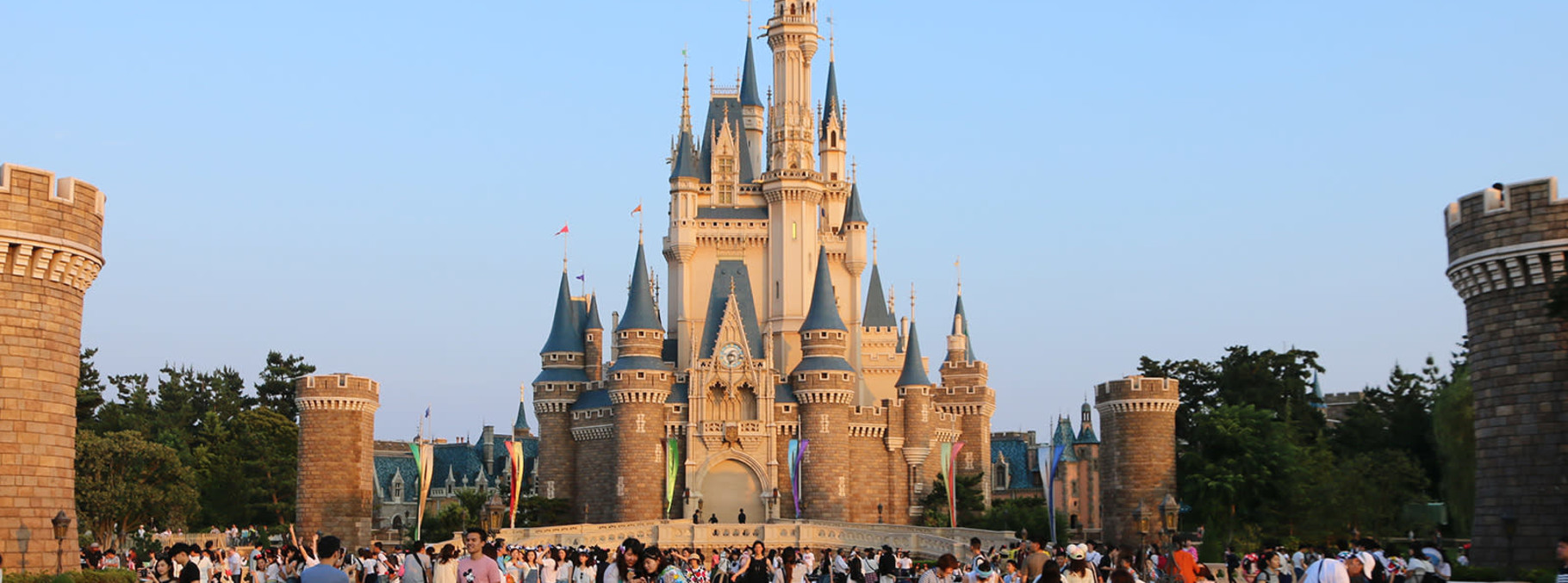Matsumoto, a charming town in Nagano Prefecture, central Japan, is proudly home to one of Japan's national treasures. Nestled in a picturesque valley, Matsumoto is cradled by mountains and graced by rivers, forming a stunning landscape. This idyllic setting is not only a sight to behold but also an integral part of Nagano's renowned rice farming.
The town of Matsumoto is a treasure trove of scenic beauty and natural wonders, drawing international tourists throughout the year. Its crowning jewel, however, is the historic Matsumoto Castle. Known for its unique architecture and rich history, the castle stands as a testament to Japan's feudal era. Join us as we explore Matsumoto Castle.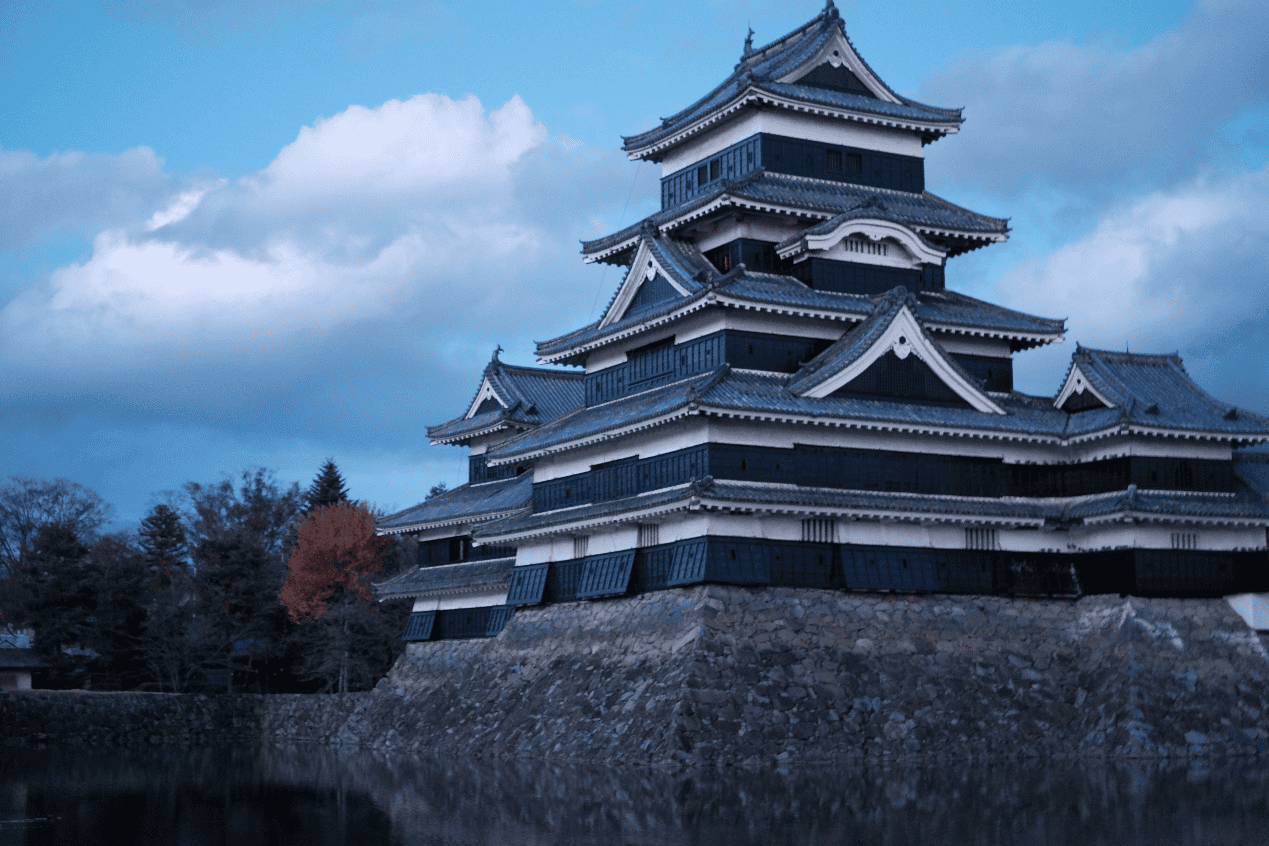
- Getting to Matsumoto Castle
- Mysteriously known as Crow Castle
- Ancient Japanese Architecture
- Beauty of the Changing Seasons
- Rebirth of the Castle Tower
Getting to Matsumoto Castle
Starting from Tokyo's Shinjuku Station, a comfortable three-hour ride on the JR Central Express will transport you directly to Matsumoto. Alternatively, if you're traveling from Osaka, a smooth transition at Nagoya onto the JR Shinano Line will have you arriving in approximately three and a half hours.
Once you step off at JR Matsumoto Station, a 20-minute stroll will lead you to Matsumoto Castle, the town's historic centerpiece.
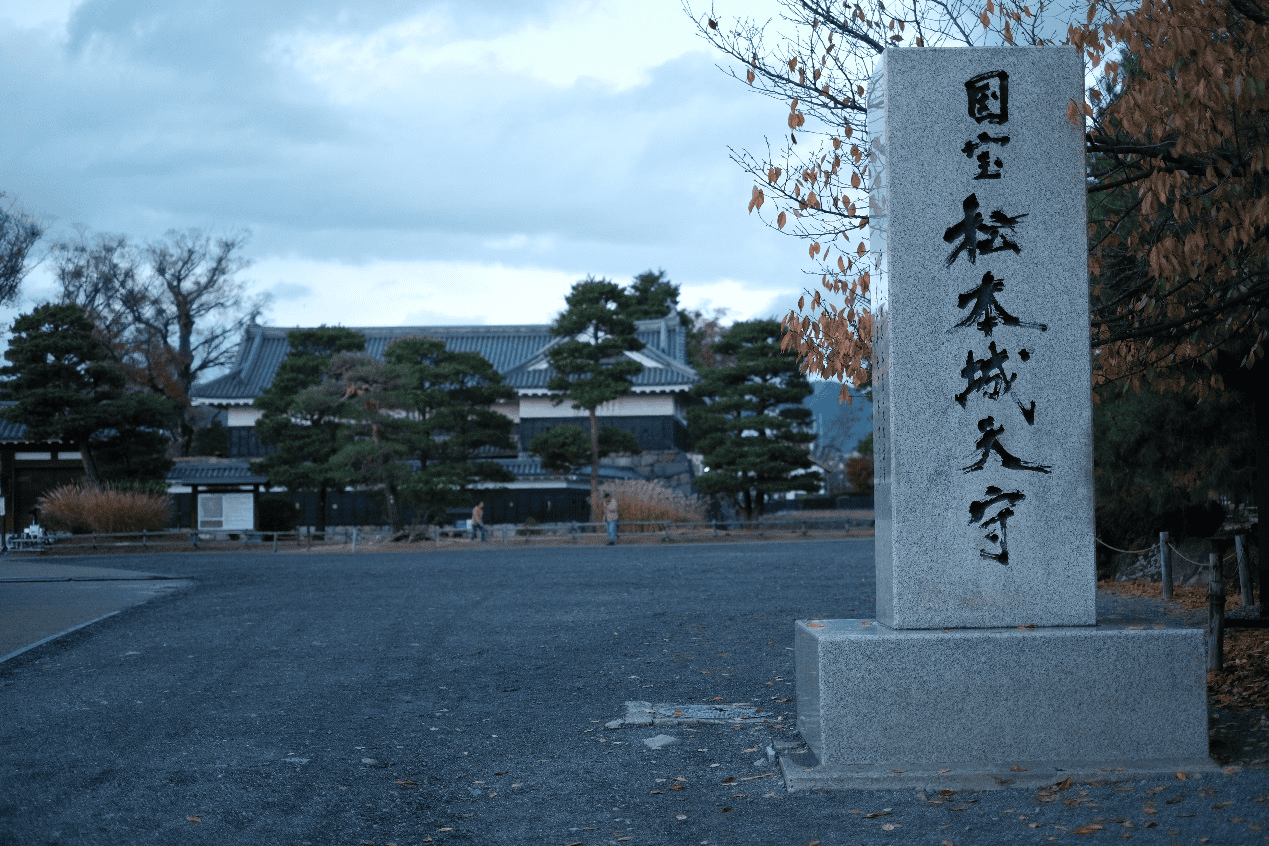
Mysteriously known as Crow Castle
Matsumoto Castle, a revered national treasure of Japan, stands out as one of the mere 12 original wooden castles still existing in the country. Its origins date back to the 16th century, weaving a rich tapestry of history.
The castle's story began in 1504 when Shimadachi Sadanaga of the Ogasawara clan erected Fukashi Castle on this site. It later fell under the control of the Takeda clan, during which the castle was renamed Matsumoto Castle. Following the Takeda clan's decline, the Ogasawara clan reclaimed and extensively renovated it. This castle is more than just a structure; it's a silent chronicle of the tumultuous Warring States Period and the Edo Period of Japan.
Matsumoto Castle is distinguished by its striking black exterior walls, earning it the nickname "Crow Castle." This moniker is further brought to life by the eerie sight of crows circling the castle at dusk, adding an aura of mystery.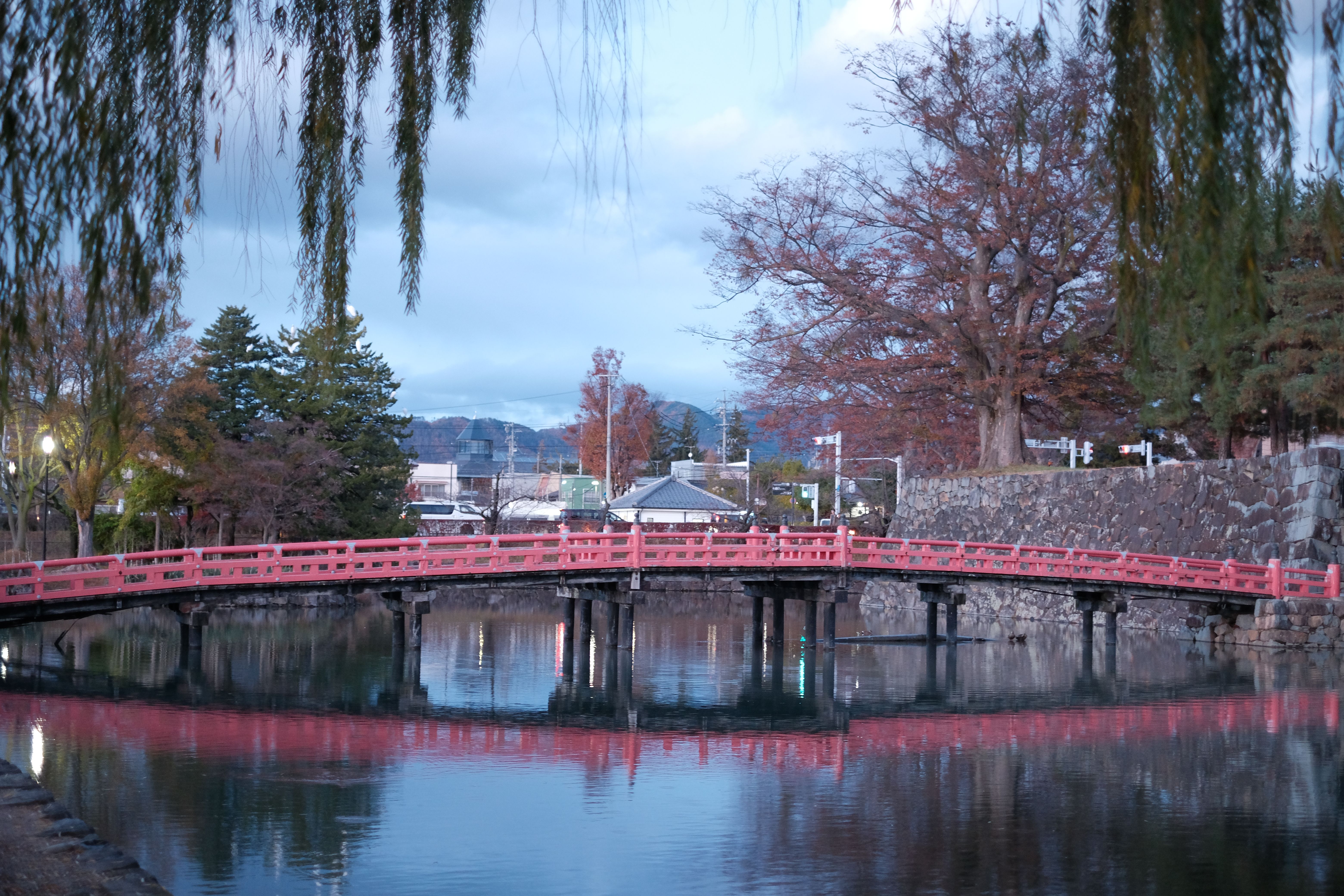
Ancient Japanese Architecture
Matsumoto Castle is not just a testament to Japan's military history; it's also a magnificent example of the architectural prowess of the Warring States Period. This architectural marvel is characterized by its unique style, most notably its striking black exterior walls, meticulously repainted annually to preserve its historical grandeur.
At the heart of this architectural wonder is the great keep, surrounded by a harmonious ensemble of connected smaller castles. These include the small Inui keep, Watari Tower, Tatsumitsuke Tower, and Tsukimi Tower, each echoing the distinctive architectural elements of ancient Japanese urban design.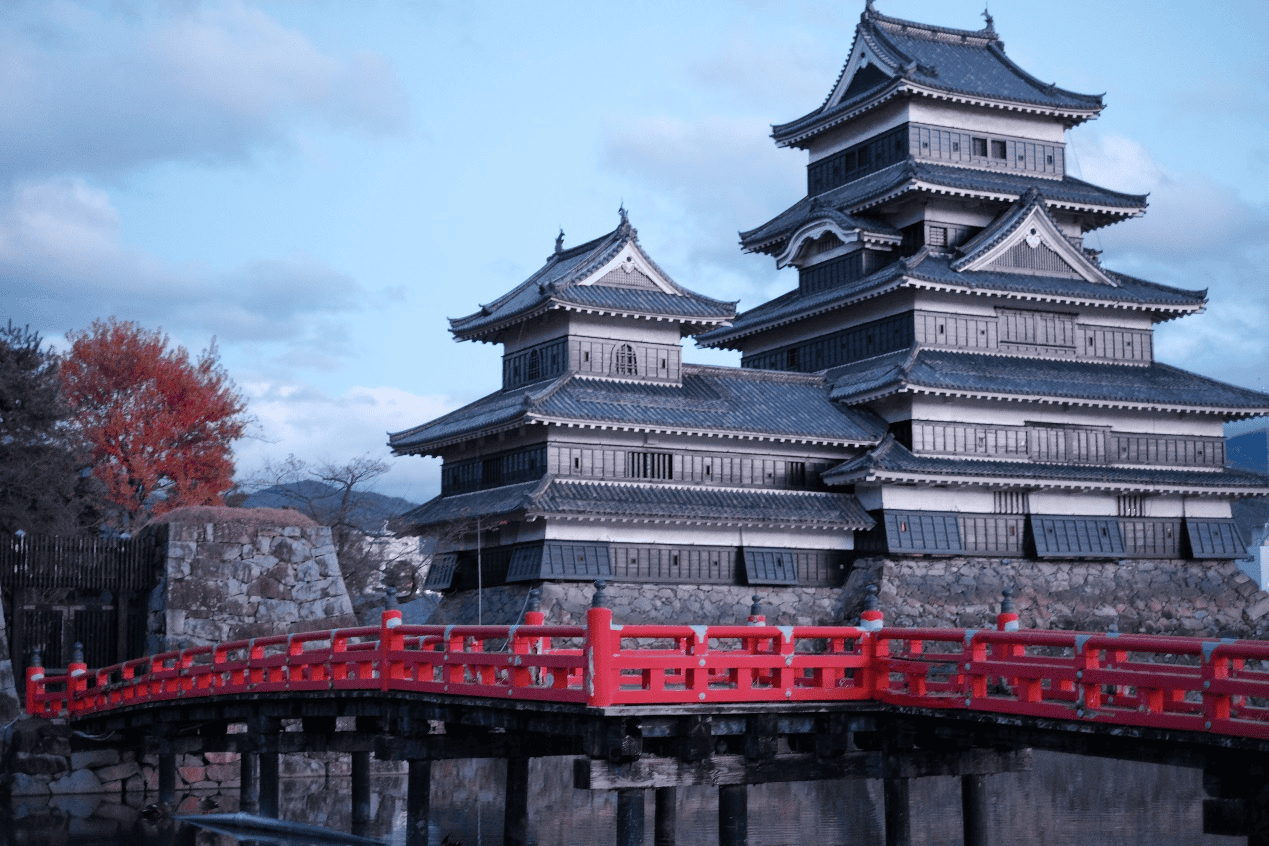
---Tenshukaku, the main building of Matsumoto Castle
The castle's main tower, rising majestically to five stories, showcases a complex and ingenious design. Within its walls lie carefully crafted defensive features such as stone-drop windows and gun holes, embodying the intricate military strategies of the era. Matsumoto Castle stands as a masterful blend of art and fortification, a proud symbol of ancient Japanese architectural ingenuity.
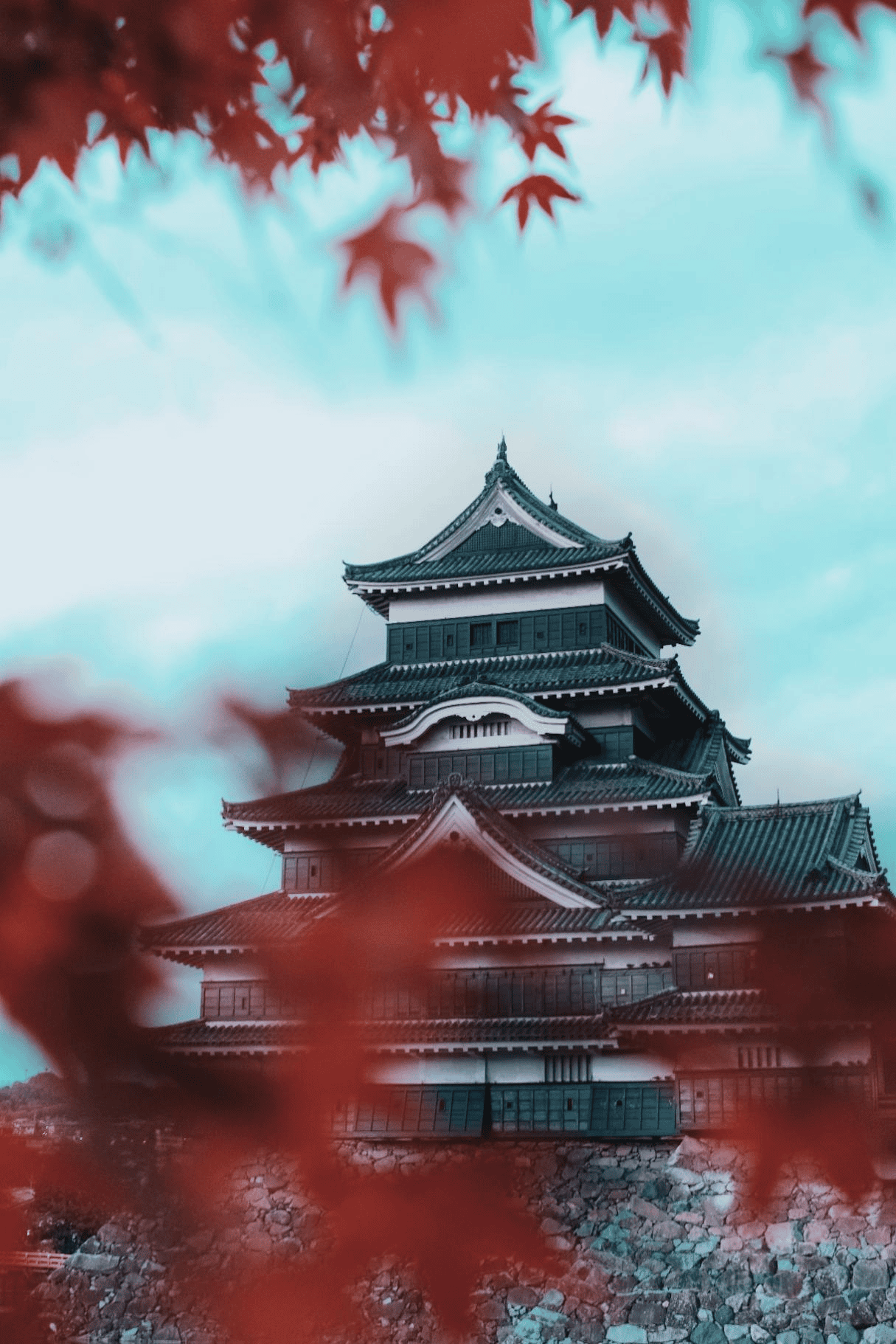
---As seen in autumn
Beauty of the Changing Seasons
Matsumoto Castle's gardens are a kaleidoscope of nature's artistry, offering a mesmerizing display of colors that transform with the seasons. In spring, the castle grounds become a cherry blossom haven, with a vibrant array of azaleas, wisterias, roses, and the unique Ogasawara peonies unfurling their petals. This floral spectacle creates a delightful contrast against the castle's stoic facade.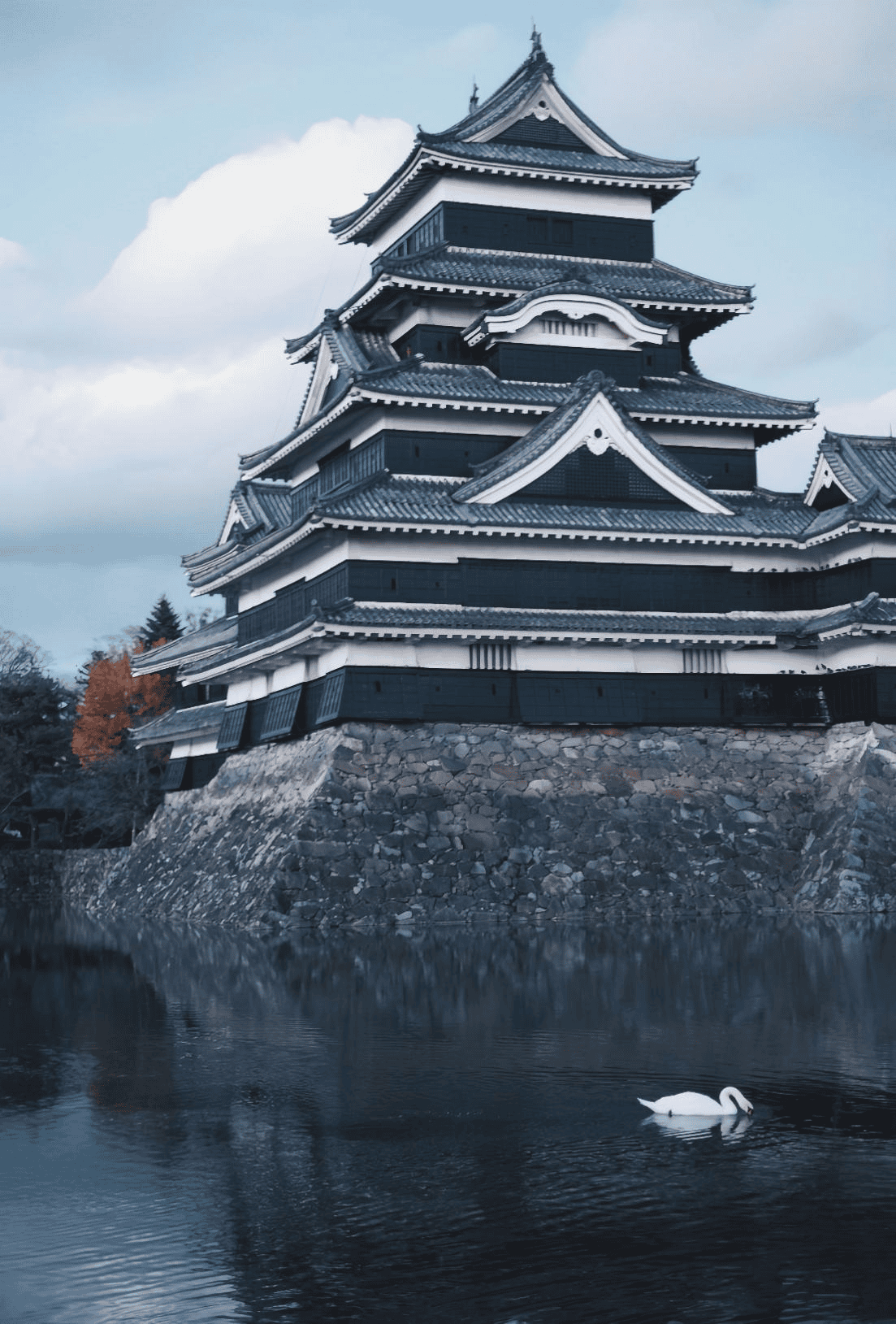
As autumn arrives, the scenery takes a dramatic turn. Matsumoto Castle lies amidst red maple leaves and golden ginkgo, creating a striking contrast with its dark walls. Winter brings its own magic, turning the shallow lake beneath the castle tower into a mirror of profound depth. In this season, the black and white hues of Matsumoto Castle, mirrored in the moat and set against the backdrop of the Northern Alps, present a scene of spectacular beauty.
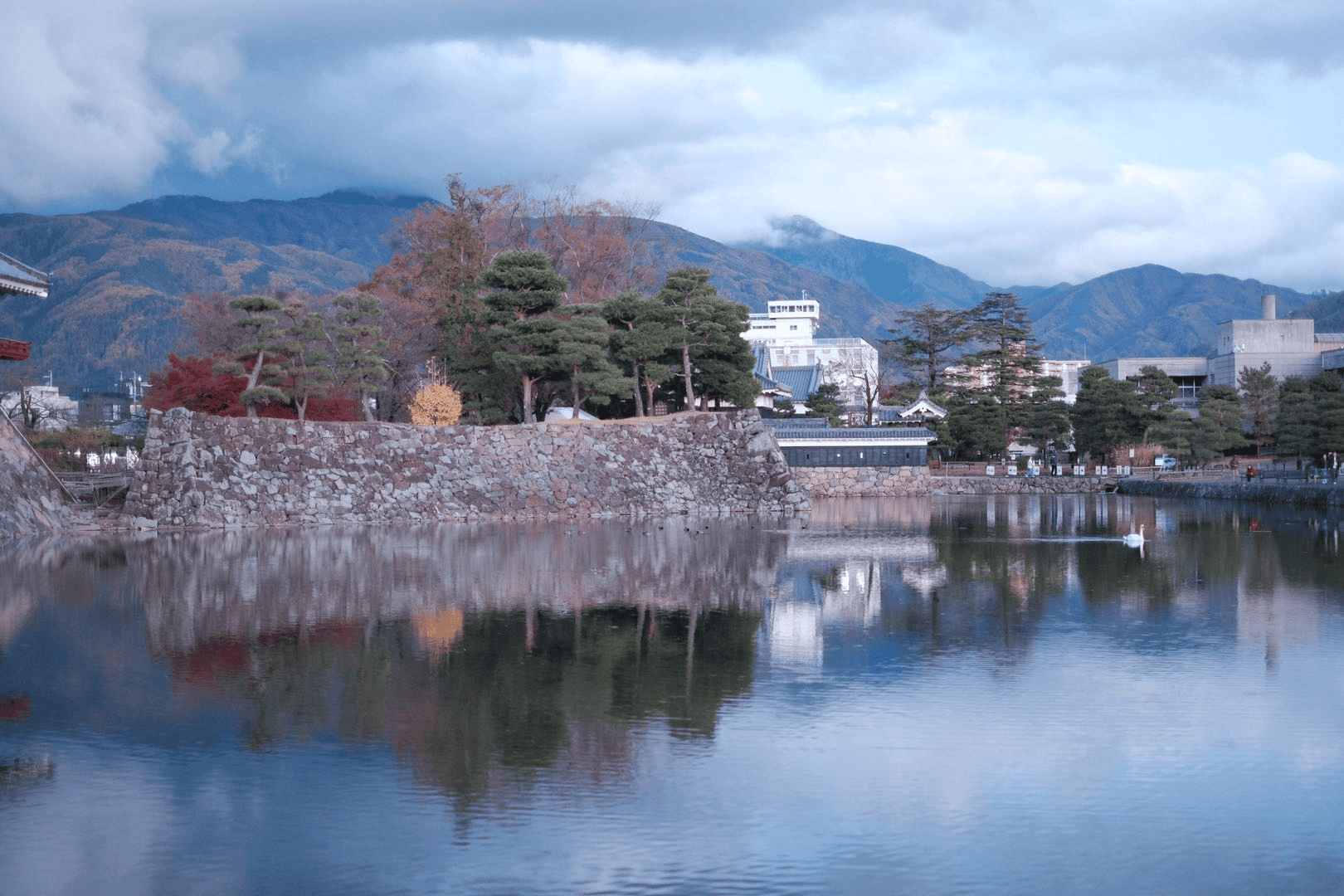 ---Reflection of the Northern Alps
---Reflection of the Northern Alps
Rebirth of the Castle Tower
The journey of Matsumoto Castle through time is a story of resilience and reverence. In 1871, following Japan's transition from feudal domains to modern prefectures, the castle came under national control and was subsequently auctioned. Its new owner, Ichikawa, chose to preserve it, honoring the city's heritage.
In the early 20th century, the castle faced a critical period as it began to lean due to neglect. This sparked a series of extensive restoration efforts, including significant repairs in the Meiji era and comprehensive restoration projects in the Showa period. These interventions were vital in safeguarding the castle's historical and cultural essence.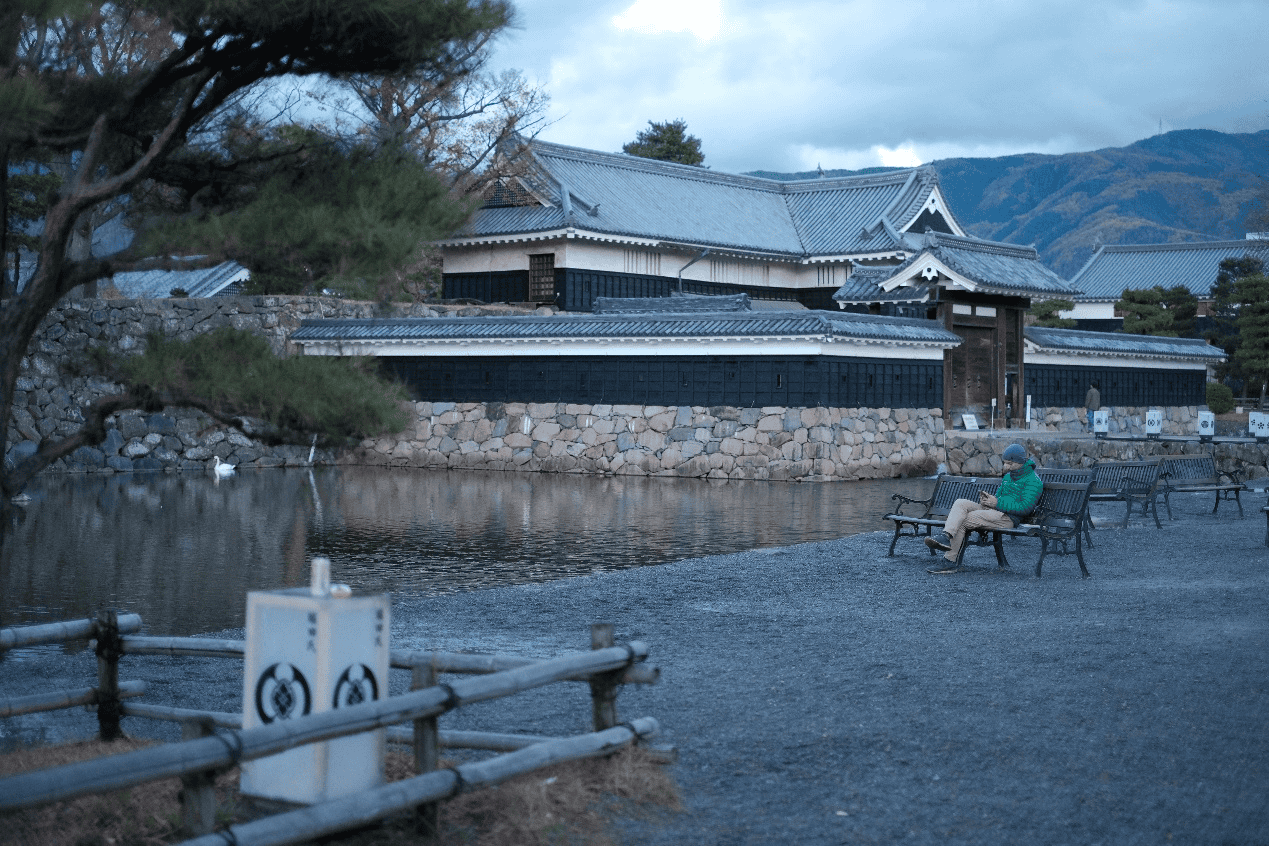
Inside the castle, an exhibition hall brings history to life. It showcases a range of cultural artifacts, including ancient armor and weapons, transporting visitors back to the tumultuous Warring States Period. Matsumoto Castle is more than a historical monument; it stands as a living testament to Japanese culture and art, embodying the nation's enduring legacy.
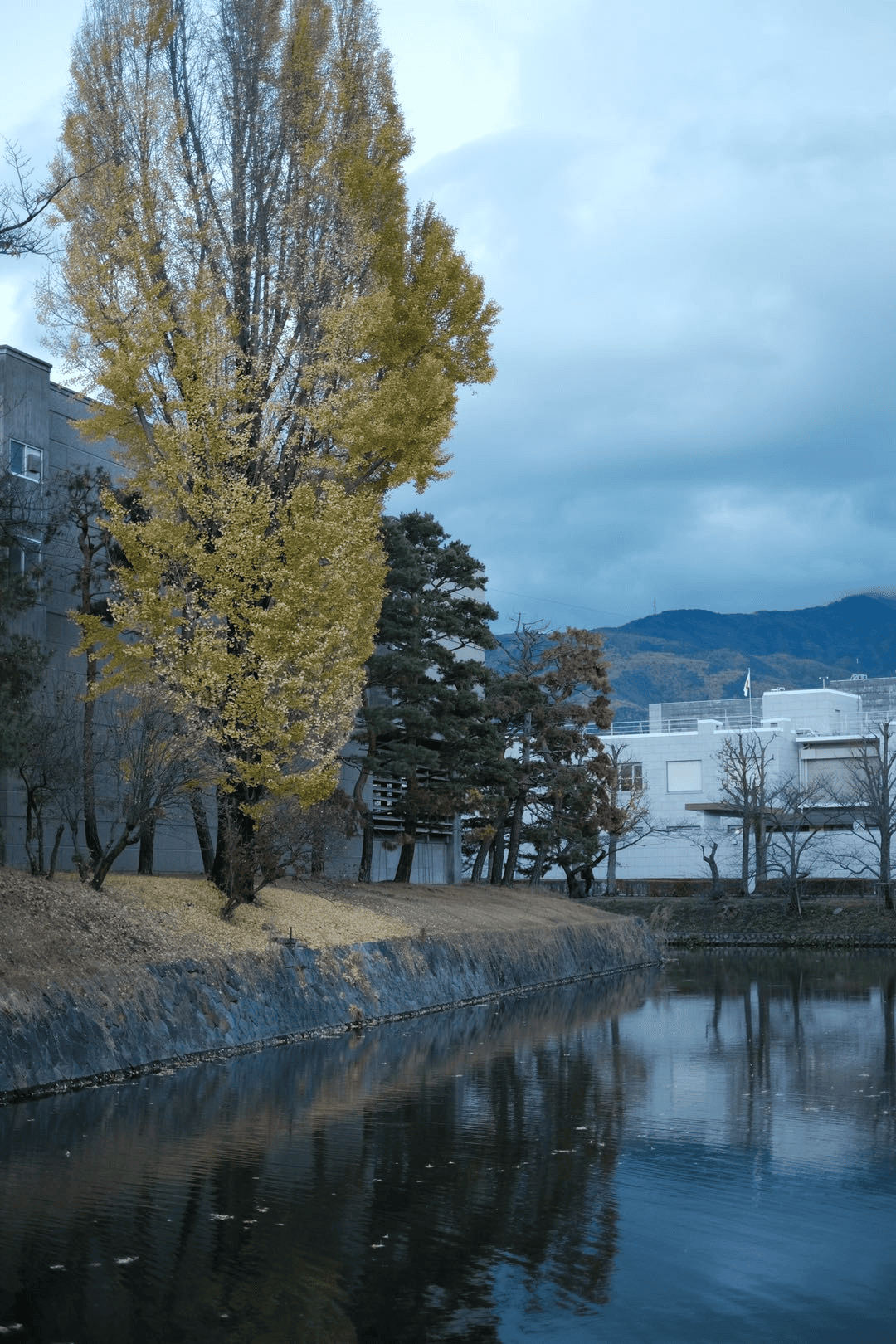 ---Ginkgo trees by the moat
---Ginkgo trees by the moat
Discovering the allure of Matsumoto Castle is a journey best experienced across different seasons, each offering a unique perspective of its surrounding beauty. Whether it's the blossoming splendor of spring, the fiery hues of autumn, or the serene snowscape of winter, the castle's backdrop transforms enchantingly with the seasons. Don't forget to climb to the top of the Castle Tower for stunning views of Matsumoto City and the Northern Alps.
Download the Ikidane Nippon App: iOS / Android
Let us know if there is something that needs to be fixed: Feedback Form



